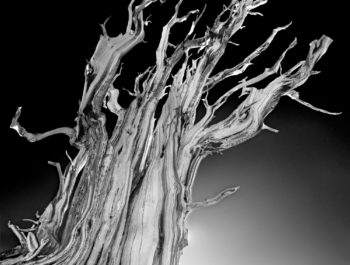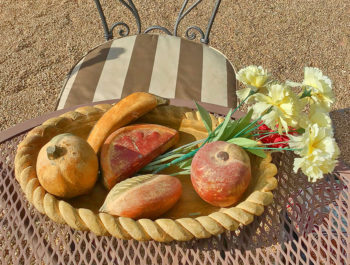Creating Artistic Photographs Part 10: The Narrow-Minded Rules of the Photo Police
No-one will ever agree on anything in the art world.
Joe Saward
Preface
The corona virus situation is changing our lives forcing us to takes precautions in order to be safe. The best approach is to stay home and minimize outside contact as much as possible. While we each have to find the approach that works best for us one thing is for sure: processing photographs at home is safe because it carries no risk of exposure.
For this reason, I decided to publish the first of a two-part series of an essay titled The Rules of the Photo Police. The jest of this essay is simple: dogmatic rules hurt creativity. Creativity is an excellent way to fight back the negative feelings that come with being forced to stay home and isolate ourselves from physical contact with others. However, creativity is harnessed by unnecessary rules. To free our creativity it is necessary to let go of limiting rules that make our images look like the photographs of those that came before us. While it is good to be influenced by the photographers we admire, this does not mean we must create images that are look-alike versions of their photographs. The goal of this essay is to see how we can prevent this from happening.
This essay was written before the corona virus situation took over our lives. It was ready for publication but I wanted to publish two essays on Upper and Lower Antelope Canyon first. Being that the Navajo Nation is closed to visitors, and being that Antelope Canyon is on the Navajo Reservation, I decided to wait and publish this essay instead because this is the opportune time to do away with dogmatic rules once and for all. The Antelope Canyon essays will be published at a later time.
Introduction
I learned a lot when I switched from film to digital photography. I learned that most of what I was doing with film and film cameras was no longer necessary. I learned that I could free myself from many things I had to do in the field and do them with software instead of a camera.
Unfortunately while I was freed from the requirements of film I was unable to enjoy the freedom digital gave me. I learned that my photographs might be investigated by a group of individuals called the ‘Photo Police’ who would be looking for contents, features and other ‘things’ that did not meet the rules they established. The purpose of these individuals was to enforce the rules they created and make me feel inadequate if I did not follow these rules.
The ‘photo police’ consist of photographers who are telling other photographers what to do by imposing arbitrary rules because they believe they are right and other photographers are wrong. What is most amazing is that they follow these rules without knowing why. When asked ‘why do you follow these rules?’ they either have no answer or they say ‘this is the way it must be done.’
To the limiting approach of the photo police I want to contrast the free approach of painters. For each thing that photographers are criticized for doing painters are praised for doing them. Why is that? Because there is no painting police. The policing of a medium by practitioners of this medium seems to be currently limited to photography.
You may ask ‘why not make paintings since the things you want to do are OK with painters?’ Good point except I do not want to make paintings, I want to make photographs. What I like about painting is the freedom given to its practitioners. What I lament about photography is that the freedom granted to painters does not extend to photographers. To embrace painting because what I do is not accepted by the photo police would mean quitting for lack of support. I don’t want to quit photography. What I want is to have the same artistic freedom that painters enjoy.
The Rules of No
I call the rules enforced by the photo police the ‘rules of no’ because they are based on not doing this or not doing that. According to these rules, there is a right and a wrong answer to each artistic challenge. The photo police is there to decide if the answer I use is the correct one. If they say ‘yes’ I am praised. If they say ‘no’ I am outcast. These rules tell me ‘do not do this, do not do that.’
These rules affect everything: they aim to dictate what I should photograph, how I should photograph it, how I should process the photograph, which camera and equipment I should use, how I should market it, and more. No aspect of photography is left untouched by this dogma. It is all-encompassing. It is also all limiting resulting in unnecessary conformity that goes against self-expression, the fundamental purpose of art.
What puzzles me most about the rules of no is that they do not seek my opinion. While it is me who is the subject of criticism no opportunity is provided to offer counter-arguments to defend my artistic choices. While it is clear that these rules are a matter of opinion they are presented as law. The artist breaking them is the villain, guilty of disrespecting such rules.
In the section below I list some of these rules of no, debunking them with examples proving them wrong. Before I start I want to point out that this list is not a compendium, an encyclopedia, a dictionary, or rules of no anthology. It is a non-exhaustive list of things that came to my mind as I reflected on the subject and wrote this essay. Some of these things were experienced by myself and some of these things were experienced by students who brought them to my attention. I am sure there are other rules of no, in fact, you may recall some of them while you read this essay.
I also want to point out that this essay is not written in anger although it may seem so at times. It is written to clear my head, the purpose being to free myself from all the things I was told not to do. I must say it worked wonders. After writing it I created some of the most exciting and novel images I ever made. It is obvious that writing this freed my creativity, brought things to a close, and provided a positive conclusion to a situation that had been disturbing me for years.
Similarly, the examples I use are not meant to illustrate every rule of no. They are meant to illustrate some of the rules I encountered. Other rules, encountered by students or yet to be encountered by myself, are left un-illustrated. Also, the same rule of no may be illustrated twice, three times or even more, just because I feel like it and because it is my artistic authorship prerogative.
Finally, I did not follow a specific selection rule when choosing these illustrations, preferring to select images because of how much I like them rather than how well they fit the rule they are supposed to illustrate. Because I am dealing with arbitrary rules, rules that create a significant resentment in my person, I decided to not set arbitrary parameters for myself when writing and illustrating this essay. Doing so makes perfect sense to me.
This being said, here are the rules of no. I numbered them with letters for the sake of clarity however the purpose of this listing approach is organizational rather than hierarchical.
No Centered Horizon Rule
Rule of no: do not put the horizon in the middle of the photograph.
Fact: I can place the horizon line wherever I want, including in the middle of the image if I feel like it. Watch me!
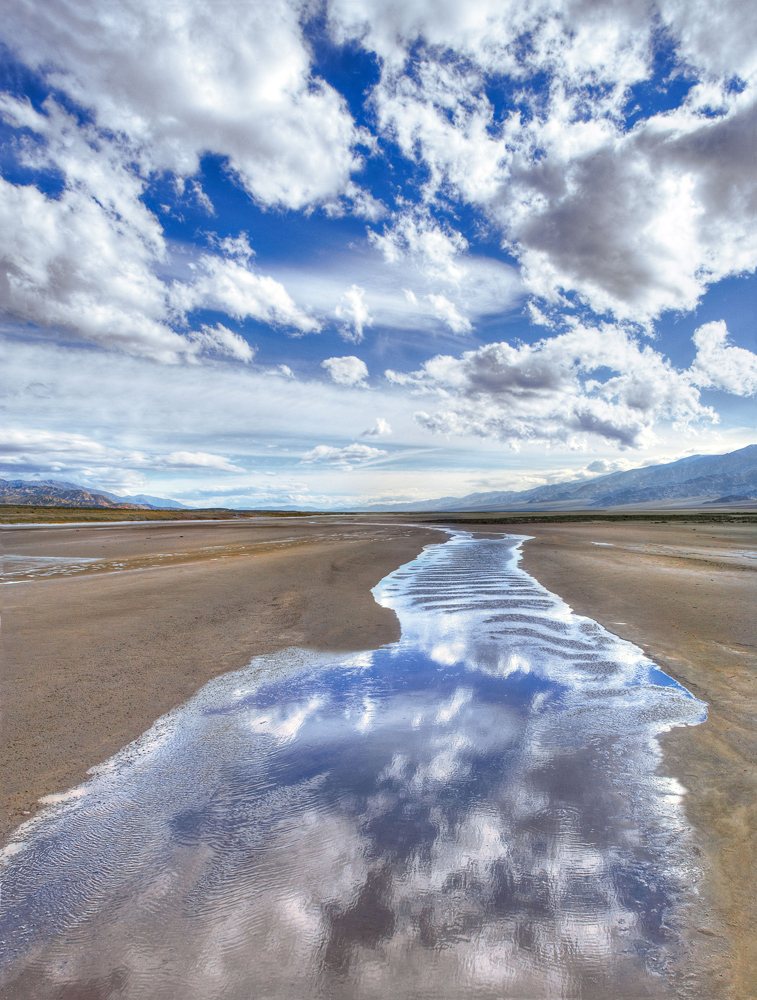
The horizon is smack in the center of the photograph.
I find this composition ideal for this image. It is also the cover image of my first book, Mastering Landscape Photography, which sold very well by the way.
No Incorrect Blurry Water Rule
Rule of no: do not use the wrong shutter speed for blurry water. This rule implies that there is an ideal exposure time for blurry water shots (1/4”, 2”, whatever).
Fact: there is no such thing as an ideal blurry water exposure time. If the water in my photographs looks good to me, it is good. It is as simple as that.
No Unsharp Area Rule
Rule of no: do not have unsharp areas in your photographs. Everything must be sharp.
Fact: no it does not. Everything may be sharp, or everything may be blurry, or I can have some areas sharp and other areas blurry. The fact is I decide what is sharp and what is blurry. This is up to me, not up to the photo police. Of course, if I want everything to be sharp and it is not then I need to learn how to use hyperfocal or focus stacking or other technique to make it so.
Painters can decide that part of their painting will be blurry or sharp. They call this increasing or decreasing the importance of specific areas to attract the viewer’s eye to specific areas. Photographers can do the same by creating blurred areas purposefully during capture or using local blurring and sharpening or local contrast increase or decrease during processing. However, if they do so the photo police calls it a technical flaw.
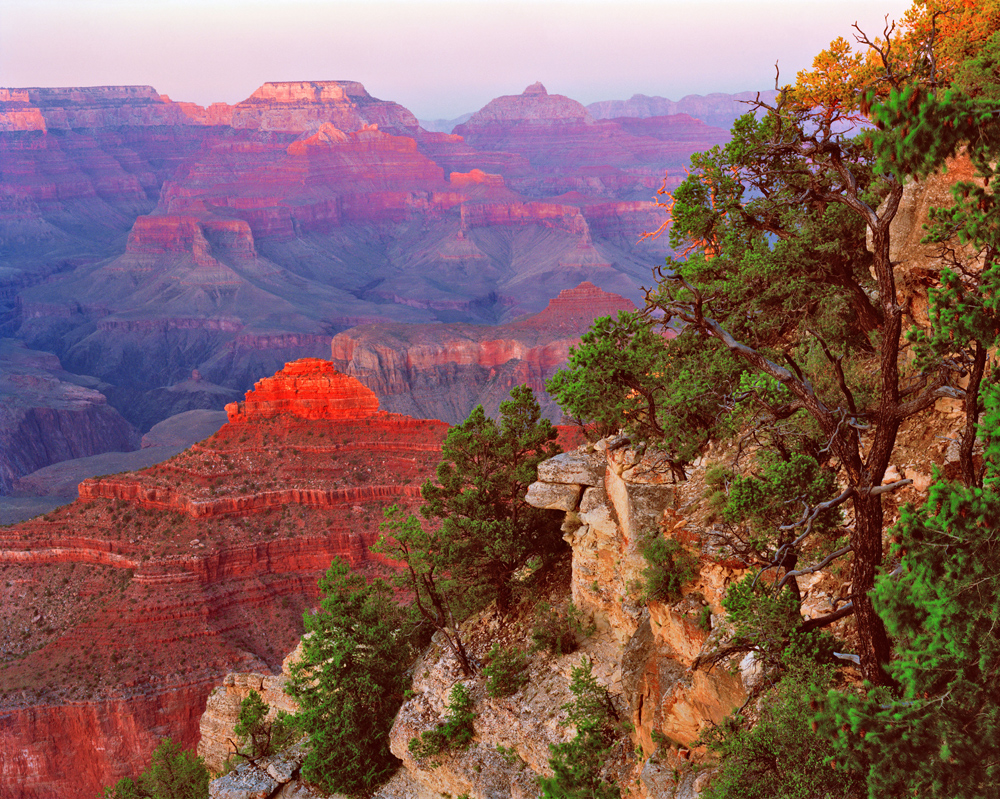
This is my all-time best selling photograph. Print sales of this image paid for my first house.
The wind blurred the trees on the right side. Obviously this did not deter buyers from acquiring it.
It is also the cover of my third book, Marketing Fine Art Photography, which sold even better than my first book.
No Moon Pasting Rule
Rule of no: do not paste the moon in your photograph.
Fact: ridiculous. I can do whatever I want because this is art, not astronomy. Why should I be forced to have a white empty disk in the sky when I can easily paste in a moon with details in Photoshop? Doing so makes me happy because it provides a solution to an age-old problem.
No Wrong Moon Rule
Rule of no: do not paste the wrong moon. If you must paste a moon in your photographs using the right moon, not one that’s upside down, not one taken from the southern hemisphere in a North hemisphere landscape.
Fact: not so. Again I can do whatever I want because this is art, not astronomy. I can paste a moon from Australia into a Utah photograph or put one which is upside down if I like to. So what if it is the ‘wrong’ moon? I don’t plan to use my photos to teach a class about moon geography! This is just art. If it looks good to me it is good. Nothing else to it.
No Same Moon Rule
Rule of no: if you must paste, do not use the same moon in each photograph.
Fact: forget that. The earth has only one moon and so do I! I use the same one for all my photos. It makes my life a lot easier.
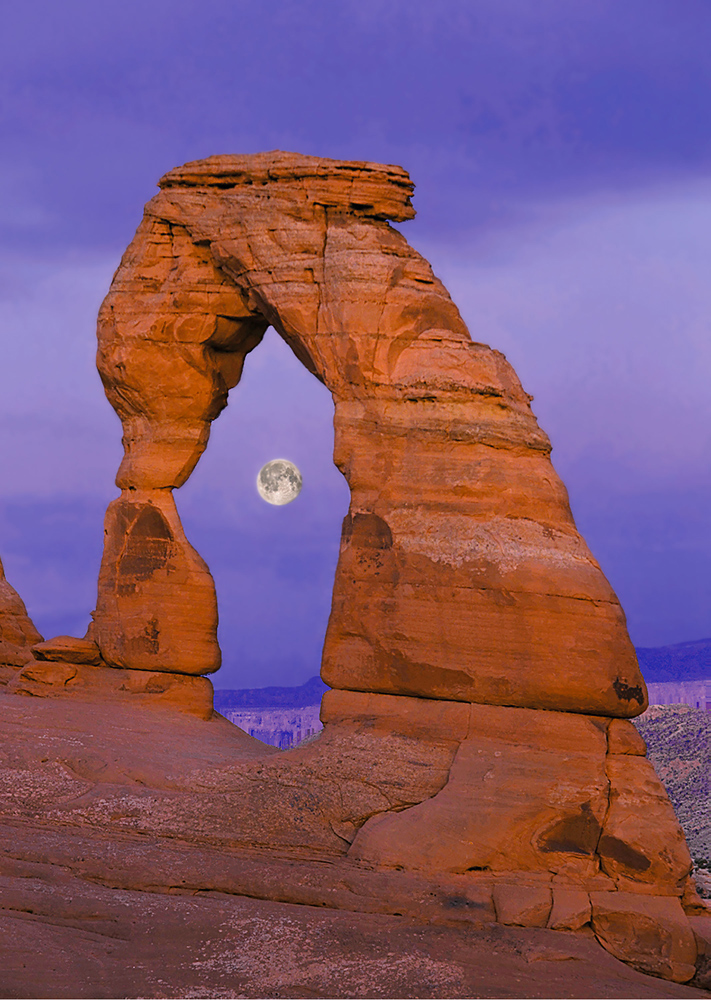
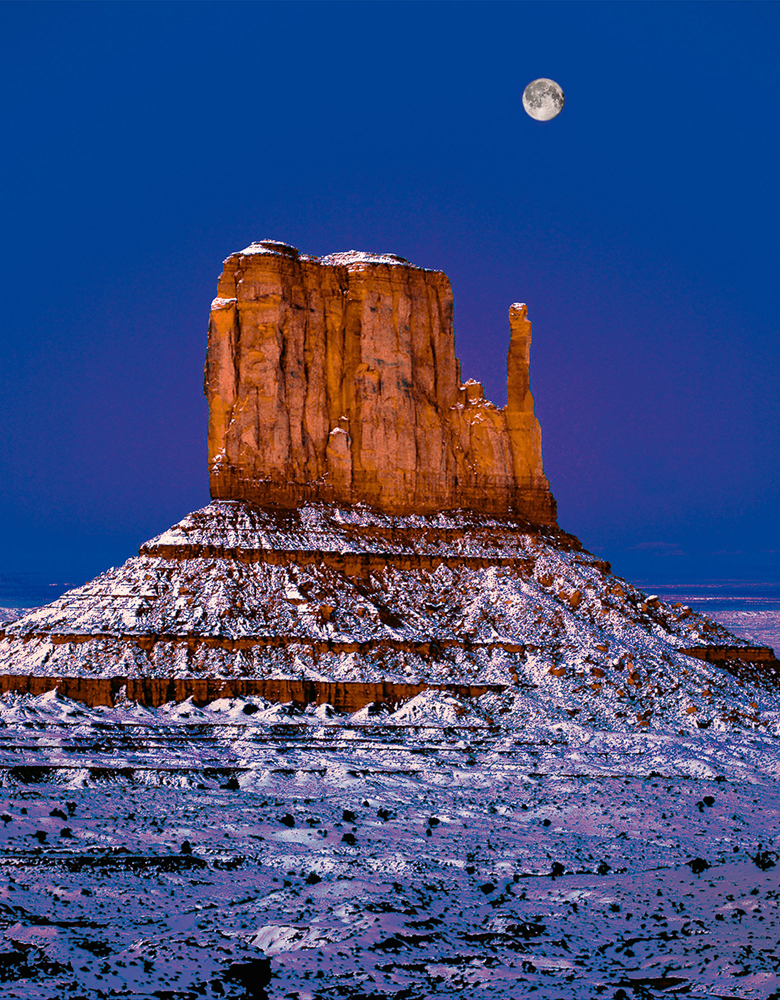
The same exact moon was pasted in both photographs. I see no problem with it.
No Diffraction Rule
Rule of no: do not show diffraction in your photographs. Avoid it at all costs by testing your lenses and looking at your photographs at 300% magnification on your monitor to make sure there is none.
Fact: diffraction matters to me only if I can see it on a print. If I cannot see it on the print, diffraction is only theoretical and not something to worry about. It does not exist, except perhaps on my monitor when viewed at 300% or above. However, nobody looks at my prints at 300%. So I use View at Print Size in Photoshop to see what the image will look like when it is printed. This tells me whether or not diffraction if it is there, will be visible on a print or not.
No Areas Without Details Rule
Rule of no: do not have featureless areas. You must have details everywhere in the image, in both highlights and shadows.
Fact: short-sighted if not ignorant. If we did that we would have no high key, low key, or silhouettes. Painters can paint details wherever they like, using detail to increase or decrease the importance of specific areas of their work. Photographers can do the same using local blurring and sharpening or local contrast increase or decrease. However, if they do this the photo police calls it fooling the viewer.
Not so.
Ignorant
Naive
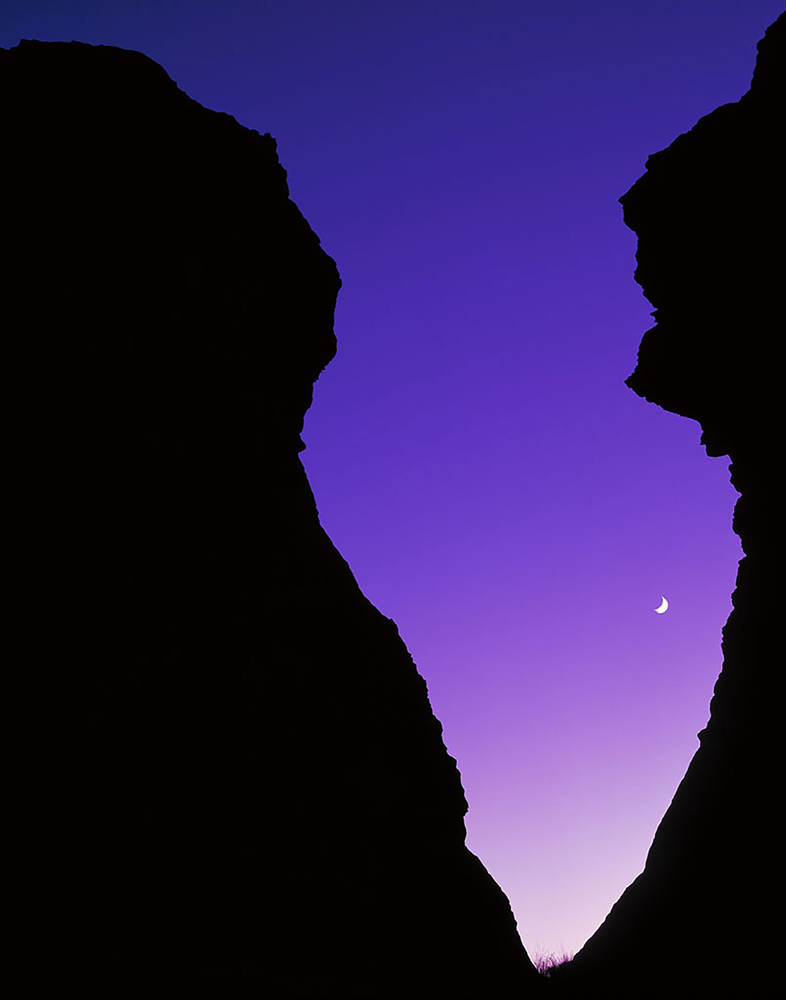
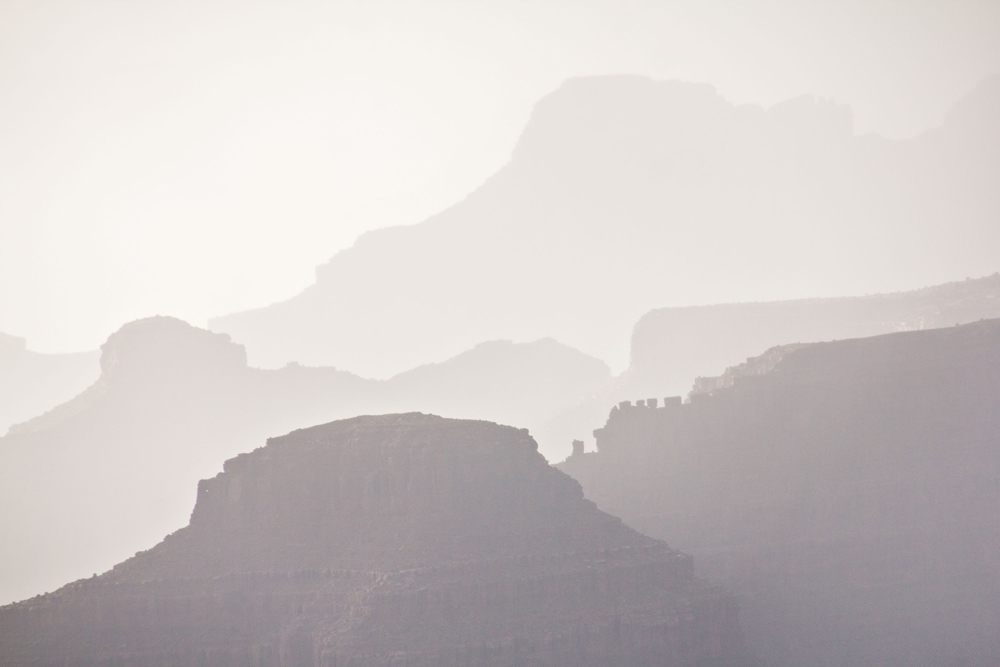
The lack of details in most areas of these photographs is what makes them visually interesting.
No Unrealistic Renderings Rule
Rule of no: do not create unrealistic images. Your photographs must show the subject in a realistic manner so it can be used for nature protection purposes.
Fact: not so. I decide what my photographs will be used for. Nature protection is one possible use (and a worthy one) but it is not the only one nor is it the one I have in mind. I am an artist not an environmental activist. As such my images do not have to be realistic. They can be imaginary and be used to protect nature just as well. As a case in point the work of Georgia O’Keeffe is used for nature protection purposes even though it is highly abstracted, demonstrating that abstract images of nature are just as effective as realistic ones when the goal is to generate interest in nature protection.
No Reformatting Rule
Rule of no: do not reformat the image to a format different from the one created by the sensor. We are not talking about cropping here, we are talking about changing the format of the image by stretching it vertically or horizontally.
Fact: who cares! I can reformat a photograph to whatever format I like. The original camera format is only a starting point that can be changed at will. It is not meant to fit every composition. The world does not come in 4×5, 6×4,5, 35mm, or other sensor formats. The world comes in any format. So I reformat the image, stretching it vertically or horizontally, to make the composition work and to please my aesthetic taste.
Painters can make paintings in any format they like, changing the proportions of the subject so it fits their chosen format. Photographers can do the same using image size and unchecking ‘keep proportion’ or by creating a larger canvas and stretching the image to fit the format of their choice. Unfortunately, if they do so the Photo Police calls it distorting the subject.
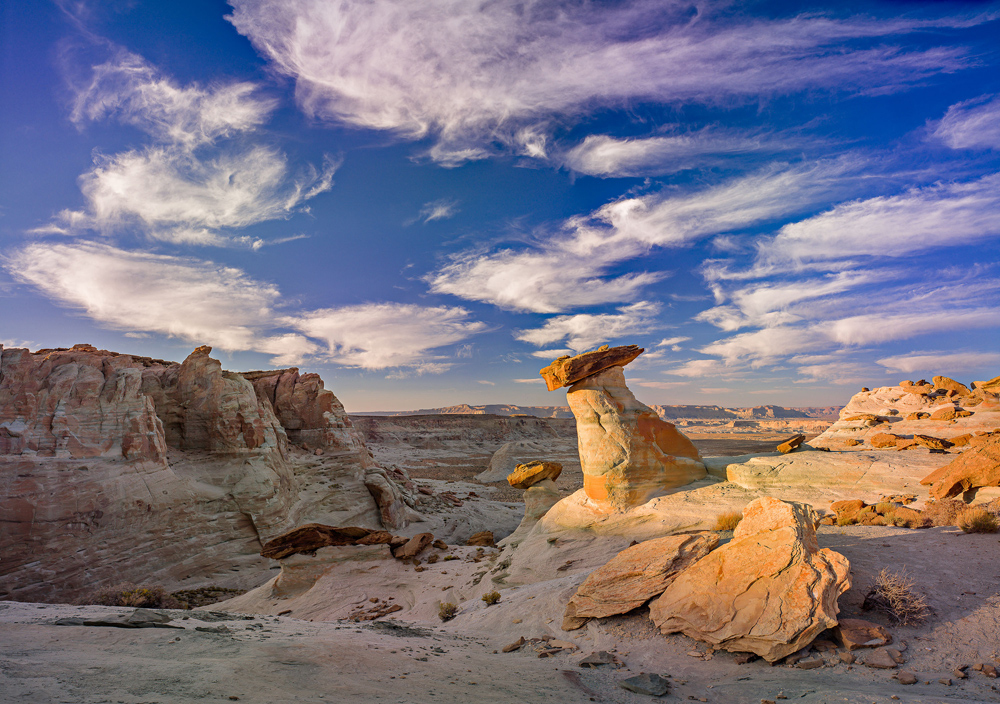
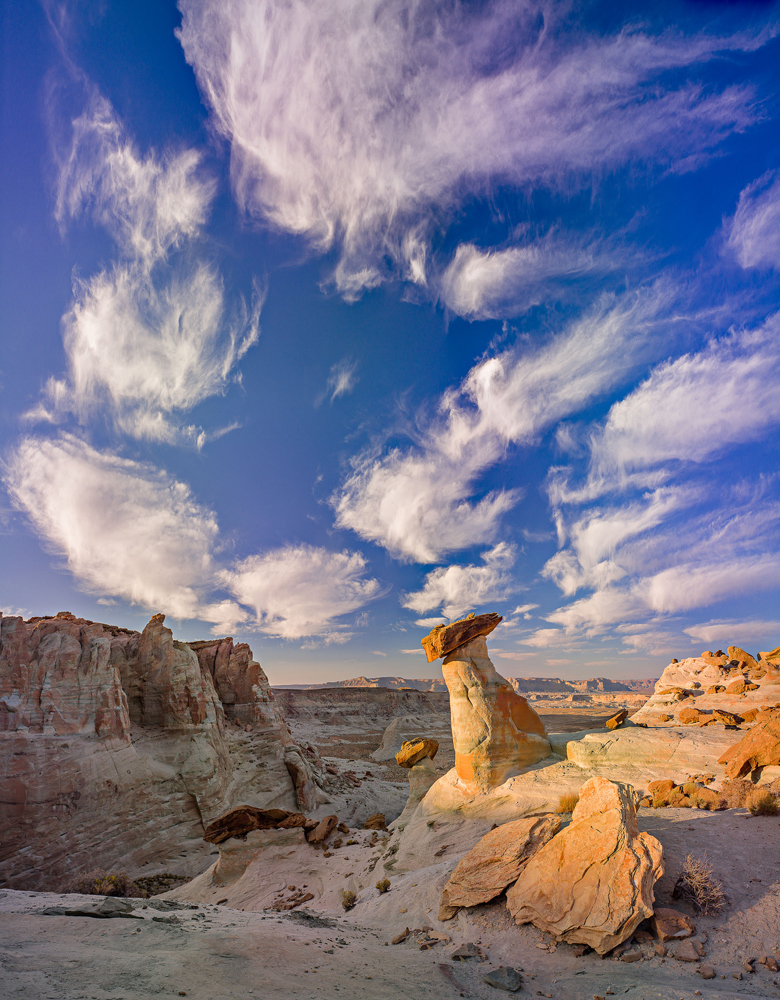
This image was reformatted from a vertical to a horizontal format
to make the sky a prominent feature, the clouds seemingly dancing over the hoodoo.
No Transforming Rule
Rule of no: do not use any of the transform functions in Photoshop to warp, distort, stretch, or otherwise change the shape of the photograph and the elements it depicts. If you want to enlarge the foreground, correct the convergence of buildings or straighten perspective you must use tilt and shifts movements on the camera or on the lens.
Fact; backward thinking. There is no point using this antiquated approach now that camera movements (tilts and shifts) can be duplicated in Photoshop using the transform functions.
Painters can change the shape of the objects they paint. They call this expressing their own style. Photographers can do the same by using warping or other transform function. Unfortunately, if they do the photo police calls such artistic decision manipulations and tarnishes their name for having done something ‘wrong’.
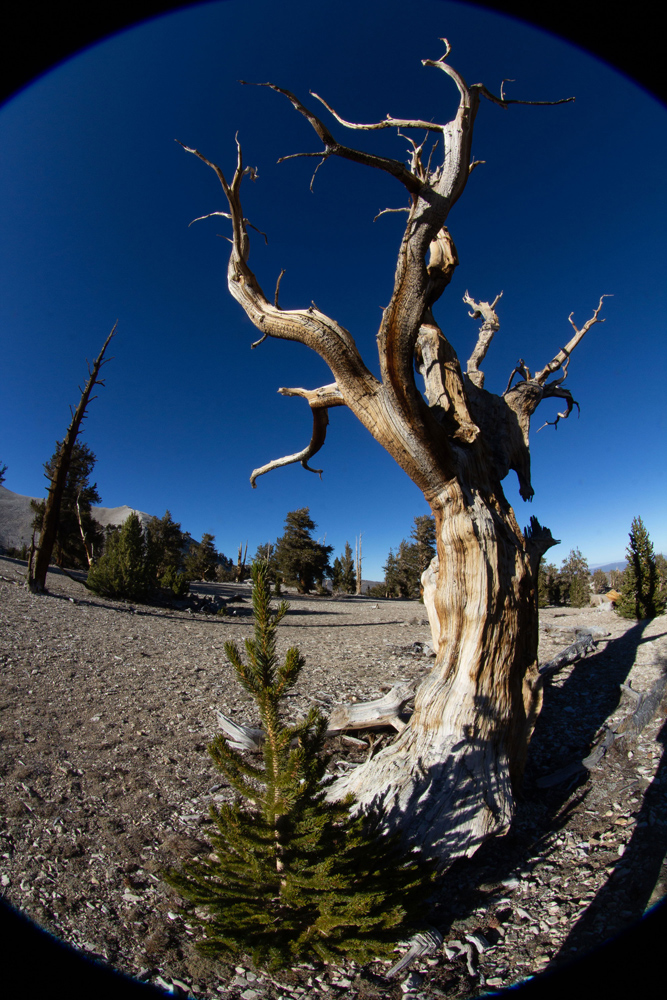
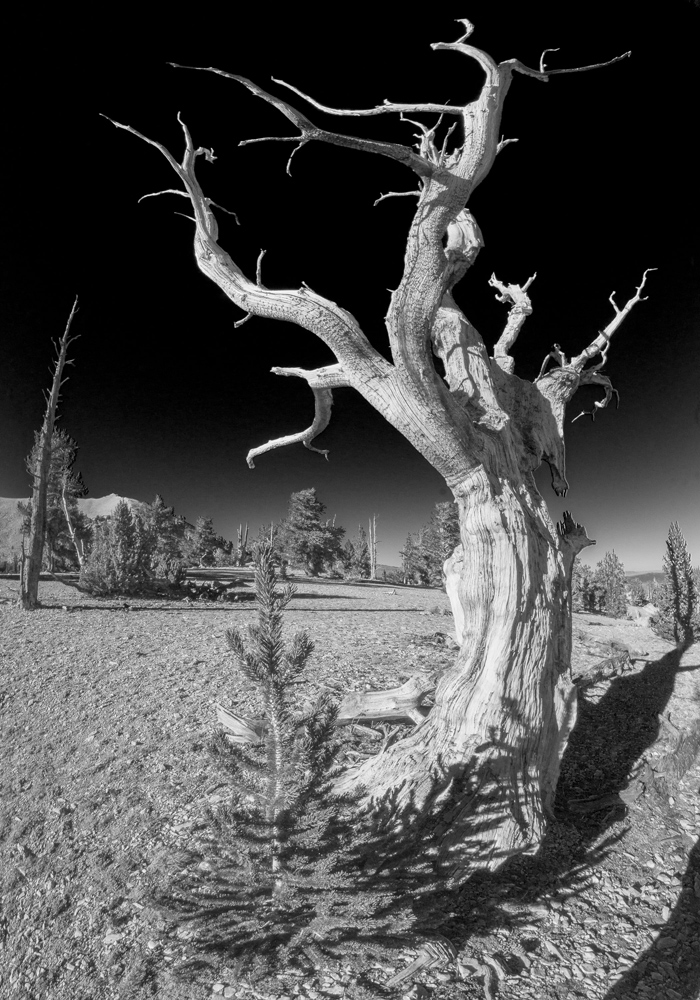
This image was warped to remove fisheye vignetting and to stretch tree branches.
This transformation was necessary to create the image I had in mind.
No Low-Resolution Camera Rule
Rule of no: do not use low-resolution cameras. Use the latest, highest resolution, and most expensive camera you can afford. Cameras that are old, megapixel-deficient, dynamic-range-anemic, overly simple, or just ‘cheap’ are unacceptable. Using one of those shows that you are not serious about your work and demonstrates a lack of commitment to the art of photography.
Fact: the human factor is more important than the camera factor. Therefore improving my skills is more important than improving my gear. Most photo police ‘photographers’ are really gear owners who lack the knowledge necessary to create fine art photographs. Today it is difficult to take a bad photo because any digital camera can take sharp, well-exposed, and dynamic-range-adequate photographs. What is challenging is to take a great photograph, process it in a masterful fashion and print it so that it looks as good on paper as it does on screen.
It is my prints that matters, not the cameras used to capture the files from which these prints were made. If the prints look great the cameras I used are irrelevant. Only the photo police care about it.
No Distorted Collages Rule
Rule of no: do not create distorted collages. Collages are ok but they must be called ‘stitching’ and they have to be done using a ‘realistic’ projection (whatever that is). Also, no misses, blank areas, disconnected lines, distorted features or other ‘mistakes’ must be present.
Fact: naïve. I create collages (I prefer artistic terms because they make me think in artistic ways) because some scenes cannot be shown with a single capture. Right now over half of my final images are collages. The projection I use is the one that I find the most aesthetically pleasing. I am unconcerned with disconnected lines, distorted features or other ‘mistakes.’ These can be fixed easily in Photoshop if I feel like it. My goal is to create art not to generate survey photographs.
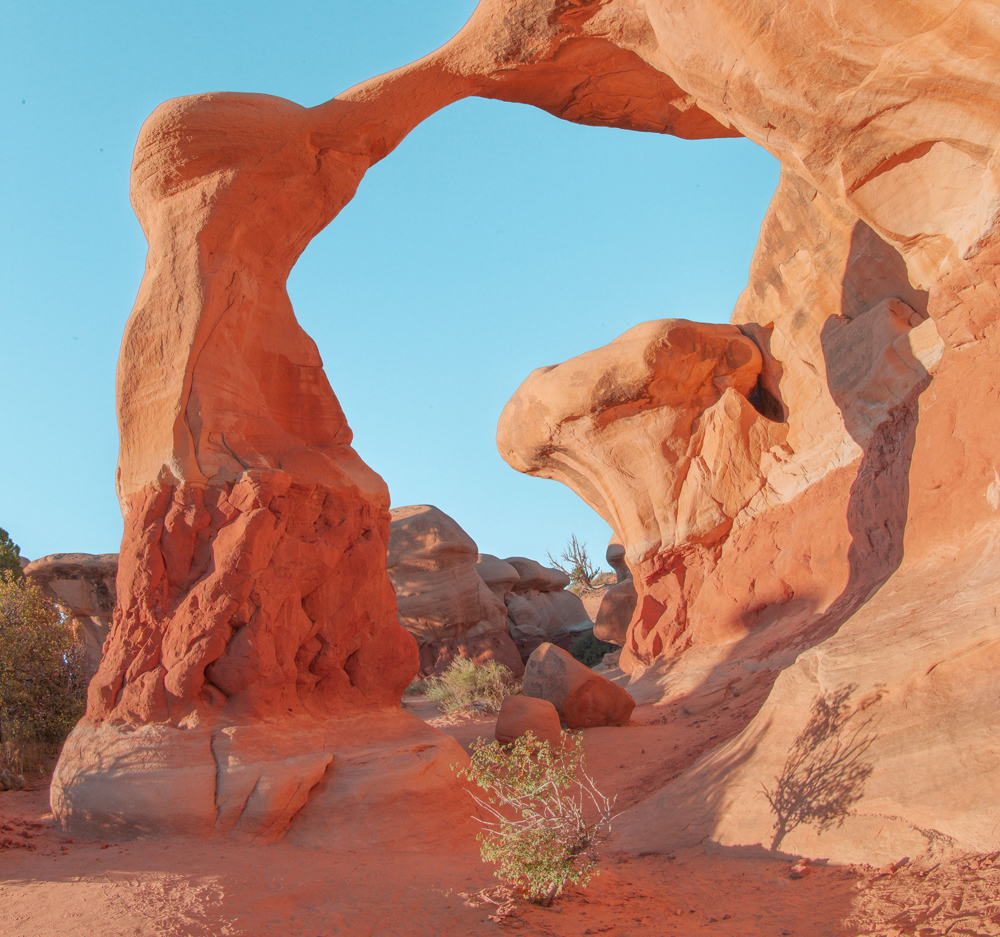
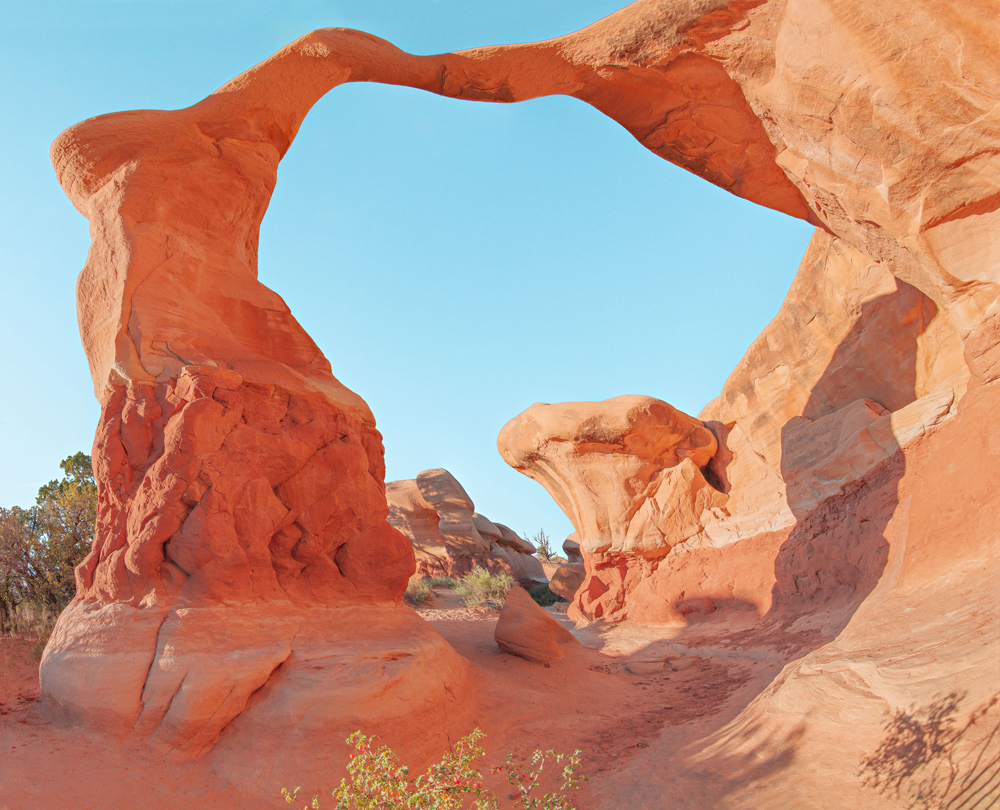
The single capture (at top) shows the arch as it is while the two vertical captures college (at bottom) shows a distorted version. I prefer the collage.
No Up Resing
Rule of no: do not up-res your original capture. Always use the highest resolution sensor for all photographs in case you want to make a ‘big print’ someday.
Fact: this is nonsense. There is no point in using a 100-megapixel sensor if I want to make an 8×10 print. Most of the time I know ahead of time what size print I will make and when do not I can always up-res it. If someone can tell the photograph was resed-up then I will have broken another photo police rule: thou shalt not make up-resing visible rule. Who cares. I use the camera I have with me. It is the one I need the most!
No High Level of Noise Rule
Rule of no: do not have noise visible in your photographs. The photo police have decided there is an ‘acceptable’ level of noise that you must follow.
Fact: I did not know I was part of this ‘decision’! In film days a photographer became famous for creating photographs with highly exaggerated grain or noise as we would call it today. His style was unique and unmistakable. So much so that it caught the eye of a vodka company that hired this artist to create their entire campaign. In turn this brand of vodka became known for this grainy depiction of their products. People loved it. Sales went up. What could have been seen as ‘wrong’ was ‘right’ in this instance because it was presented as art. Obviously the bottles of vodka in the store did not have the grainy appearance they had on the ads. Everyone knew that. I wonder if we have forgotten this fact today?
No Contrast Transformation Rule
Rule of no: do not change the contrast of the image to one totally unlike that of the original scene.
Fact: ridiculous. I can create any contrast I want no matter how far it may be from that of the original scene and whether it looks real or not. Painters can change the contrast of the scene to fit their artistic desires, making a high contrast scene soft or a pastel scene contrasty. Photographers can do the same using blacks, whites, shadows/highlights or other contrast controls. Unfortunately if they do so the photo police call it HDR-ish, over-contrasty, artsy or unrealistic.
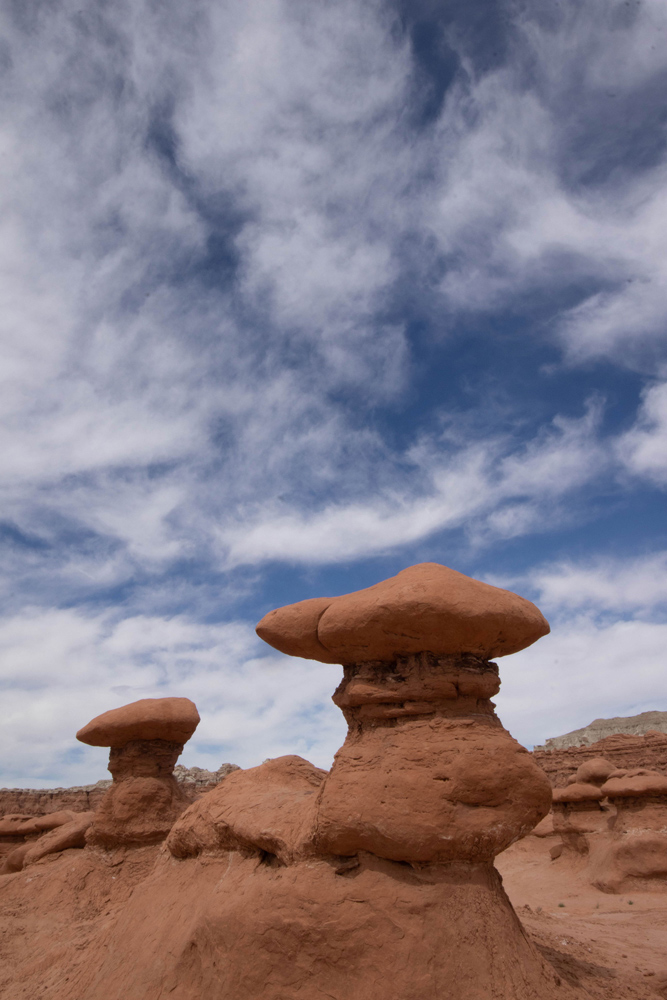
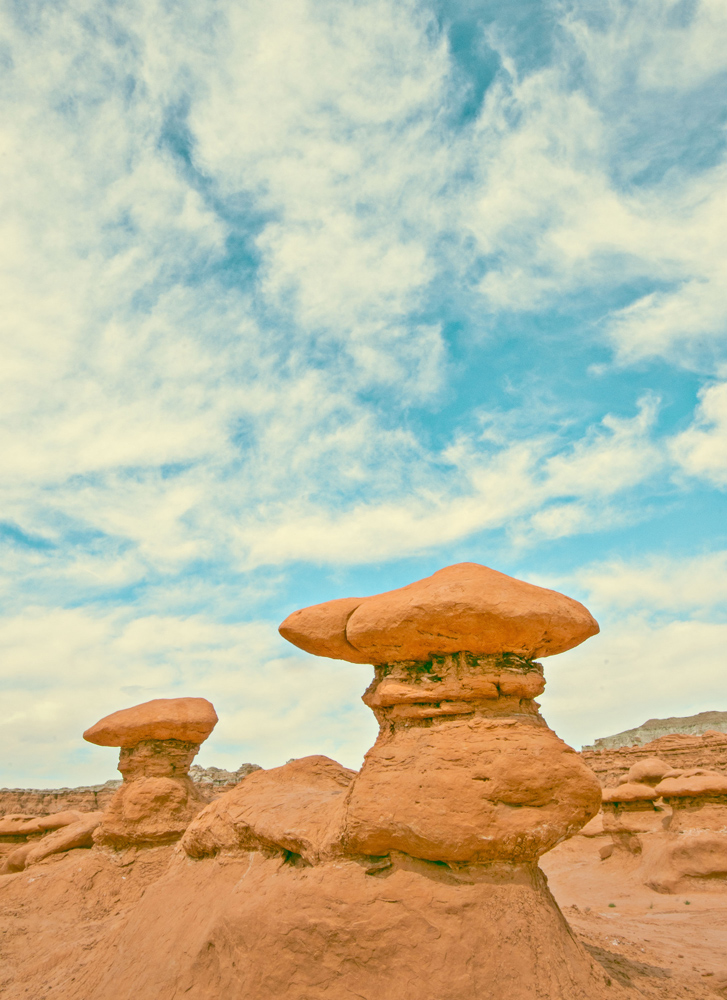
The high contrast and bluish color balance of the original capture were heavily modified to create an image I find aesthetically pleasing.
Not Top of A Butte Close To The Horizon Rule
Rule of no: do not place the top of elements along the horizon.
Fact: I fail to see the point of this rule. Things located just above or below the horizon are commonplace. There is no reason why they should not be photographed.
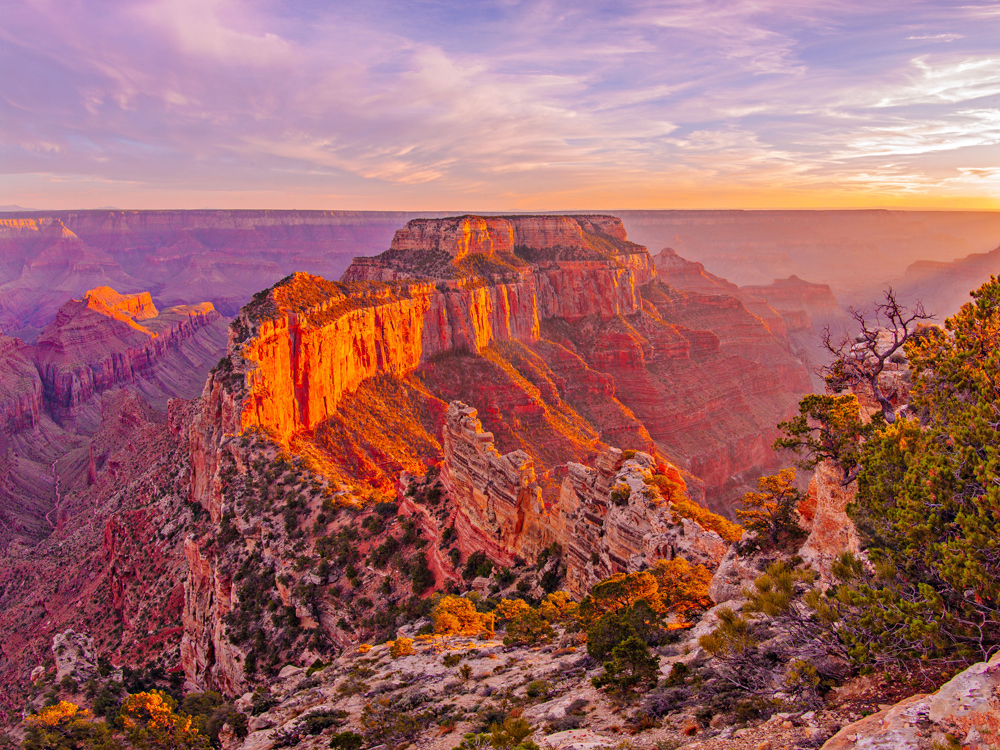
The top of Wotan’s throne nearly touches the horizon and I have no problem with it.
No Well-Known Locations Photos Rule
Rule of no: do not photograph well-known locations or areas that have already been ‘heavily’ photographed. You cannot photograph these locations because they have already been photographed to death.
Fact: absurd nonsense. There goes some of the most exciting photographic subjects: Monument Valley, Yosemite, the Grand Canyon and countless other wonderful places. Obviously these are famous for their superb photographic qualities. However, if I listen to the photo police I cannot photograph them. Why? Not because they are not beautiful but because they are too well known!
To follow this rule is to fully overlook the possibilities for a new way of seeing these incredibly beautiful places. Just because something has been photographed or painted before does not mean one cannot photograph or paint it in a new way. One of Picasso’s favorite subjects was women. There is no doubt that his subject had been painted before. Yet Picasso’s renderings are truly unique. Cezanne painted the Mont Sainte Victoire his whole life, making painting after paintings of it, all different. The look of the mountain changed as his style and the art movements he initiated changed. The place did not dictate the look; Cezanne did. It is no different for photographers. I photograph well-known locations, in fact many of the locations shown in my examples are famous and heavily photographed. However through composition and post-processing, I render these locations in ways that have not been shown before. Artistic limitations are self-imposed, not location defined.
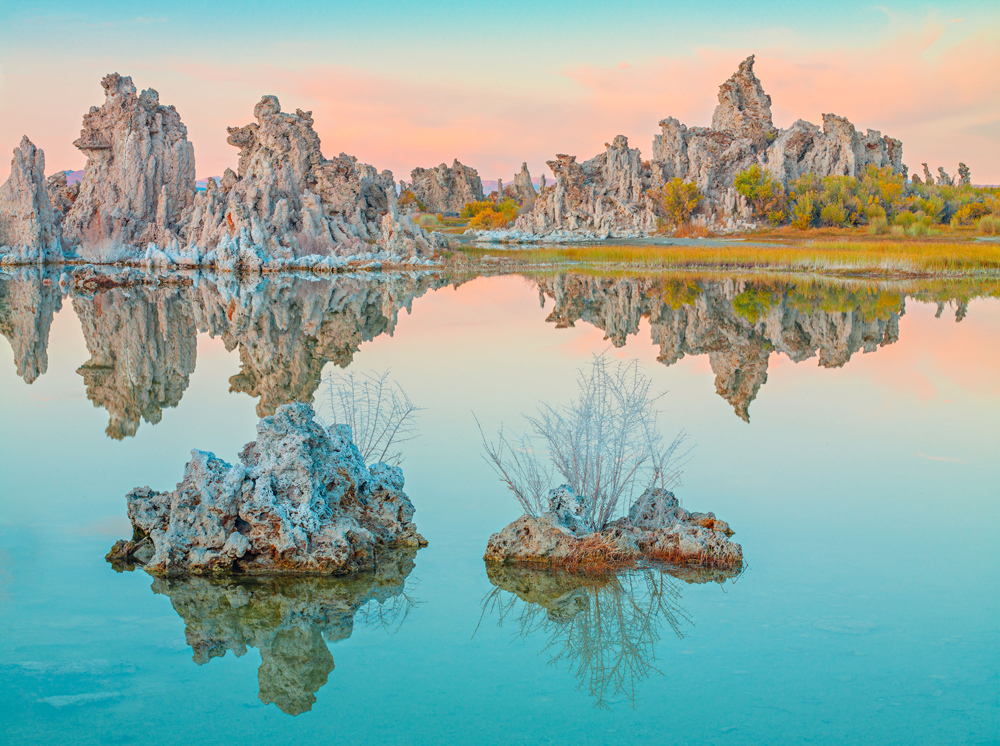
The colors of the original capture were modified to create a teal and pink color palette.
No Over-Processing Colors Rule
Rule of no: do not over-process your photographs (whatever that means). To do so is un-photographic.
Fact: creativity dwarfing! Painters can change the colors of the subjects they paint into the colors they see in their minds. They call this creating their own color palette. Photographers can do the same, using HSL, Selective Color, or any other digital color control. Unfortunately, if they do the Photo Police call it being unfaithful to reality.
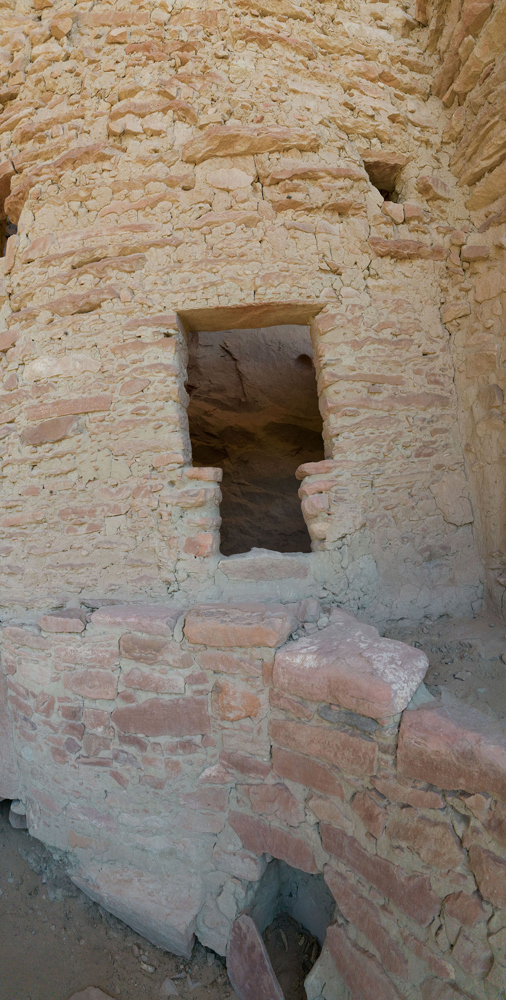
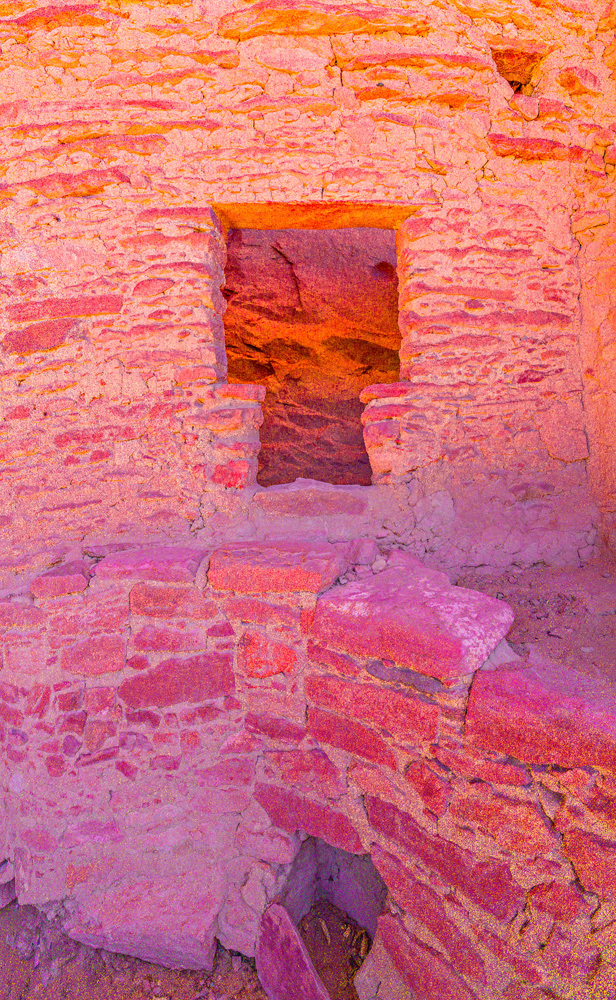
These beautiful colors and the optimized composition of
this image would never exist if the Photo Police had its way.
No Over-Saturation Rule
Don’t over-process the image
Rule of no: do not over-saturate your photographs.
Fact: color destructive! Painters can saturate their colors as much as they like. Impressionists, for example, are known for using extreme saturation levels. Photographers however are told to be cautious not to ‘oversaturate’ because if they do their colors may be considered ‘gaudy’ or worse ‘un-photographic’.
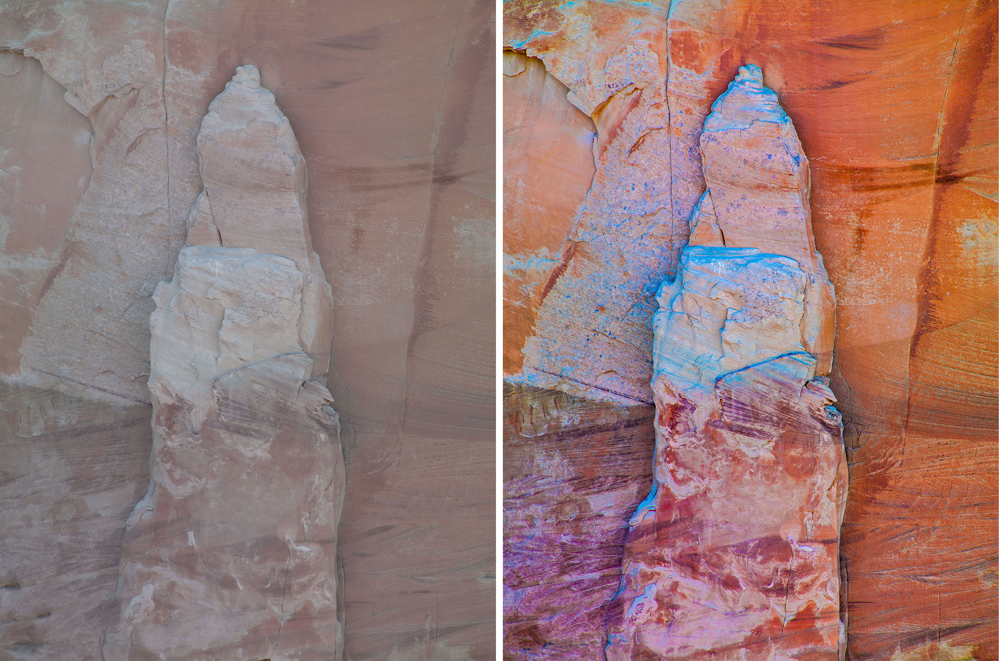
The colors of the raw file were modified to create a color scheme I find visually enticing
No Excessive Cloning and Healing Rule
Rule of no: do not use excessive cloning or healing brush. Removing dust is ok, or perhaps the occasional proverbial beer can, or the garbage that you forgot to pick up in the field, but removing major elements is a no-no.
Fact: ridiculously limiting! Painters can avoid including elements they do not want in their paintings or add elements that are not present in the scene they are looking at. They call this ‘artistic license’. Photographers can do the same by using the clone tool, the spot healing brush, or by pasting elements from other photographs. Unfortunately, if we do the photo police call it fooling the audience.
Conclusion
Let us recap. Exactly what can I do or not do? What if I was a painter? Would the rules be different? Yes, they would because there is no painting police so painters can do whatever they please. Painters can change the colors, the shapes, the contrast, add or remove elements, and paint famous locations, and more. In fact, painters can do everything that photographers cannot do. Do you want to be a creative artist? Then look at how painters approach creativity. There is a lot to learn there. I follow painters more than I follow photographers. My approach is to look at the work of painters and see how I can do what they do with photography.
However, do not let being a photographer deter you from expressing yourself creatively. The rules I just listed are obviously not law. In fact, they are not rules either. They are opinions to which I offer my counter-opinions. I do not need help setting rules. I can make my own and the rule I set is that there are no rules. This is art and what I do is my business. My audience can like or dislike what I do and that is about it. To tell me what I should or should not do in my art is stepping beyond my artistic tolerance boundaries.
Fact is the supervision of photography by the photo police places serious limitations upon the medium. These limitations affect which images should be created, what gear should be used, and how the medium should be approached. These restrictions give the impression that photography is a medium that must abide by strict rules, a medium whose practice is supervised by a higher authority.
Such restrictions, which together create what I call the ‘rules of no,’ not only holds back the progress of photography they also pigeonhole the medium into the role of ‘reality descriptor.’ However, assigning the representation of reality to photography has a major adverse effect: it prevents photography from accessing the level of art because art is not reality. To become an art-accepted medium photography must give artists the freedom required to express themselves in any way they please. Representing reality cannot be the only accepted purpose.
I noticed as I looked back at my list that many rules of no affect composition. This was not a surprise because composition is at the root of photography. We often think of it as being the organization of elements in the frame. However, it is much more than that. The composition includes color, elements we add or remove, the presence or absence of noise, the level of sharpening, the image format, and much more. Eventually, it includes everything we use in the image: every element and every component whether they are part of the original scene or part of what we add to the image. Composition is the expression of a feeling, of an emotion. It is not just a technique and it is definitely not something governed by rules. Instead, it is something controlled by our personality and by the desire to express who we are in our photographs.
Looking back I also realized that the control imposed by the Photo Police affects which artists decide to work with photography. Artists choose a specific medium for the freedom it gives them. If a medium is too restricted, if there are too many limitations imposed on it, artists shy away from it preferring to work with a medium that does not place limitations on what they can do with it.
I was affected by these rules. At first, I felt compelled to follow them because success in photography seemed dependent on it. As my career moved forward I realized that conformity was antithetical to art. I remembered that all great artists rebelled against the aesthetic trends of their time and that their work was a reaction against previous movements. So I decided that my work would take this direction. I embodied this understanding in my work by making this breakthrough an inherent aspect of my photography. Breaking the Photo Police rules enabled me to create images I truly like. This essay is another step in this process, another move in this direction. By exposing these rules I further break away from them, hopefully kissing them goodbye once and for all.
My work aims at showing the beauty of nature and at bringing a feeling of wonderment to visual representations of the landscape. In this context does a photograph need to represent reality to achieve this, does it need to be realistic to create a feeling of wonder about the natural world? I think not. In fact, I believe it is quite the opposite. An image that is unconcerned with representing reality is more likely to bring a sense of wonder. Why? Because it surprises viewers by showing them something they have never seen. Something unique. Something that exists only as art. Something created by the artist’s mind in response to his or her emotional response. Can documentary photographs that are aesthetically pleasing achieve that? Certainly. However, realism is only one way to do it. Unfortunately, realism has been the accepted paradigm for landscape photography. In fact, the job of the photo police is largely aimed at protecting the photographic realism paradigm.
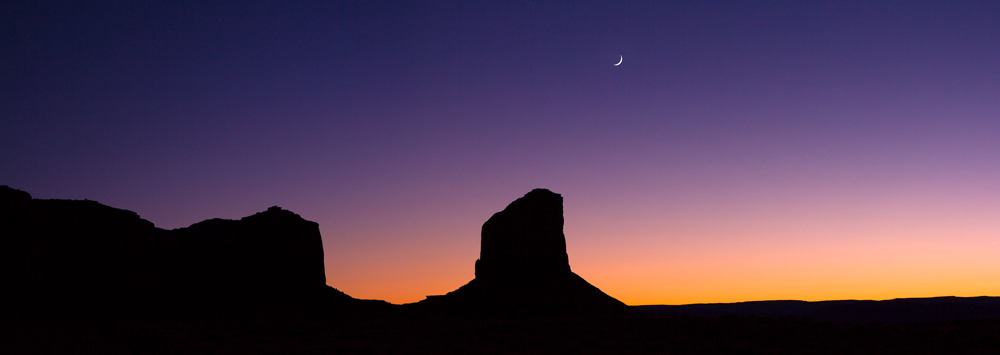
This beautiful image has no detail in the landscape or in the moon.
However, if I followed the rules of no of the photo police it would never have been created.
The problem is that when every practitioner of a visual medium embraces the same paradigm their images begin to all look alike. This is evident today where most photographers seek to create their own trophy shots, photographs that are nothing more than copies of other photographer’s images. The goal is not to show the locations they visit in a new way but to prove that they can create the same photographs as those who came before them. The goal is to prove that they are as good as their heroes, that they can claim a spot on the Mount Olympus of photography, that they can claim a step on the podium of the traditional landscape photography paradigm. However, in doing so, no matter how successful they may be, they fail to surprise viewers by presenting them with never before seen images. The surprise, if there is one given how jaded we have become about such images, is learning that the work of a specific photographer is as good as the work of the famous photographers who preceded him or her.
If there is one place that should list rules about what we can and cannot do with our cameras it is the camera manual. However, camera manuals do not say that we cannot do any of the things mentioned here with our cameras. All that the manuals talk about is how cameras work. They describe camera functions and list technical specifications. They are ‘how to’ texts, not ‘what you can and cannot do’ texts. Camera manufacturers do not place limits on what we can do. It is the photo police that limits what we can do.
Art is freedom. It can be whatever we want it to be. Therefore to the narrow mindedness of the photo police, we must offer brilliant artistic counterexamples. We must prove that what we are dealing with here is shortsightedness and not effective rules that lead to better art. And if we decide that there are rules to follow, these must be our own rules. Rules we embraced and adopted because we like them and because they help us create fantastic work. Rules that we created because we could not cope with the rules we were provided with.
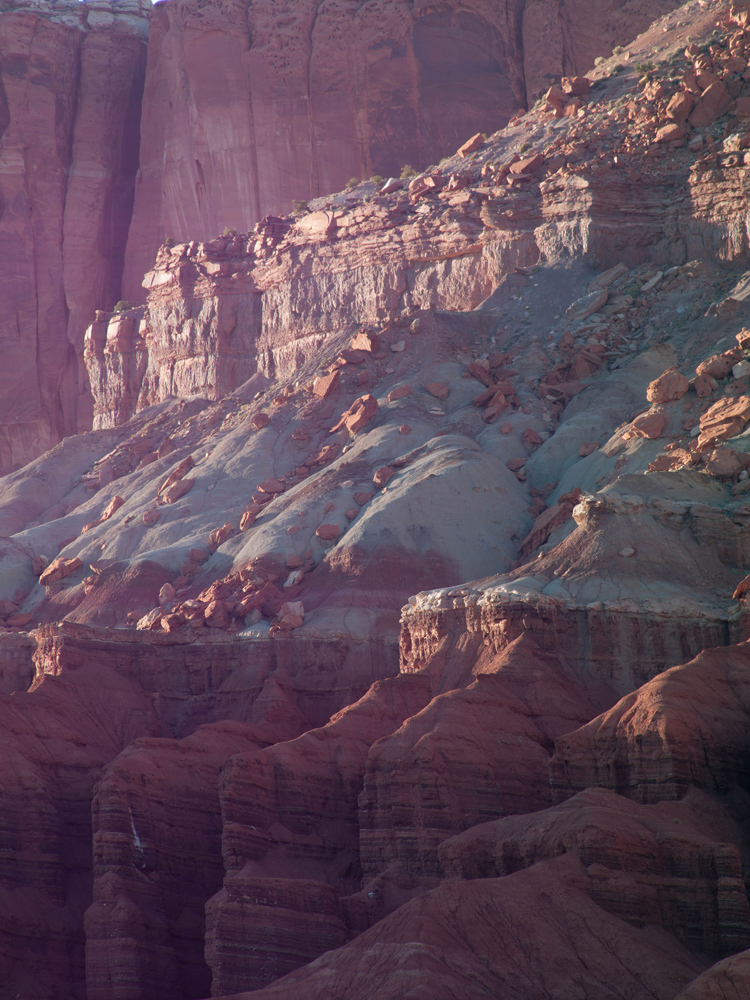
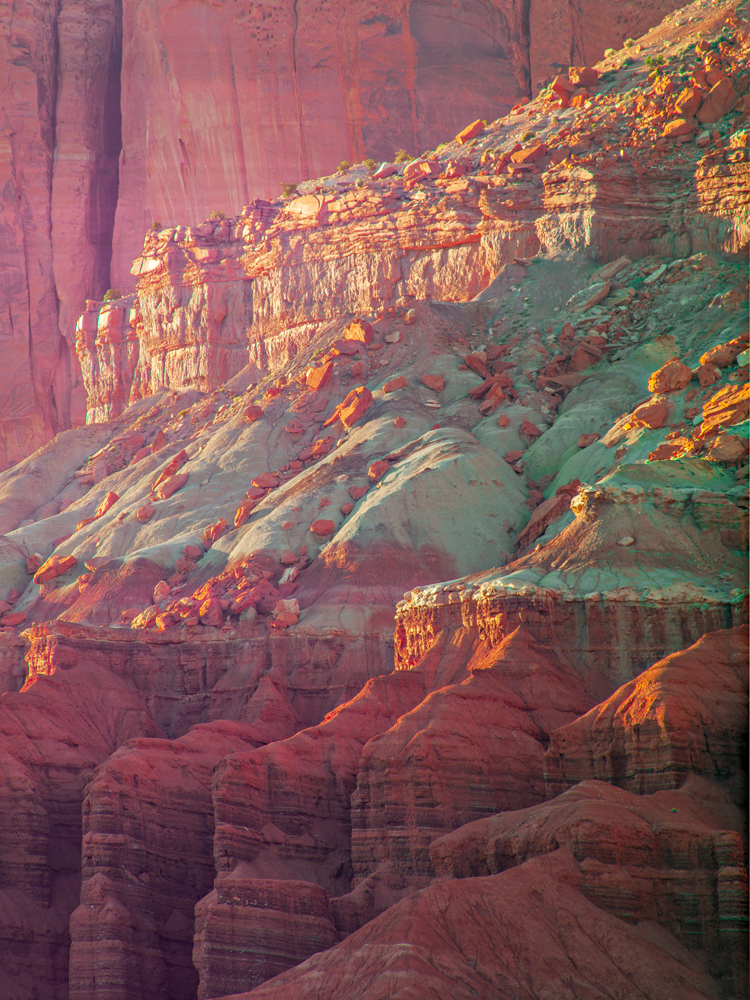
The colors and contrast of the raw file were modified to create a final image that pleases my aesthetic sensibility.
I love the changes I made. However, according to the rules of the photo police, this image is unacceptable.
Above all, we must protect ourselves from the photo police because they would like us to believe that photography is a minefield, a medium that can blow up under our feet at any time if we do not follow the rules set by them. Except there is no minefield. Indeed, what can be the consequences if we do not follow their rules? Lack of success? Reduced sales or no sales at all? Not being published in a specific magazine? Not getting a grant or an award? Being denied representation by a gallery? Some other forms of rejection not listed here? I don’t think so. Except if the people who control access to what you seek — be it publication, representation, awards, sales, etc. — are part of the photo police. If so yes they will deny you every step of the way because they will use their publications, their galleries, their grants, their awards, their refusal to buy your work as a way to enforce their rules and ‘punish’ you. They will use these to deny you access to what they consider to be the ‘real’ photography world. But truly, why would you want access to this world when there is another world whose entrance is wide open, one you can walk in immediately, one that does not have any of these hurdles stopping you from accessing it?
Fact is, you do not need rules. If it looks good to you it is good should be your only rule. Just be clear and honest about what you do and why you do it. Do not lie or fool people. You don’t have to say under each photograph that you manipulate your work because that is overkill. Instead, you can expect your audience to know about your approach. However for that to happen you need to educate your audience. This can be done through an artist statement available on your website. Or it can be done through essays written about your work. Personally I do both. I have an artist statement on my site that describes my approach and I write essays about my approach. I also have a unique money-back guarantee which states that the purchase of a non-manipulated photograph will be refunded. No customer ever asked to use it because all my photographs are manipulated.
Eventually what matters is that you create the images you want to create. If this is not the case, if you have problems doing so (everybody does at first), you need to solve these problems so that you can create the images you have in mind. For that, you need a mentor that understands you, who appreciates the kind of images you want to create, who understands the goals you are aiming for, who knows the challenges you face and who follows your artistic progression.
To Be Continued
My next essay will focus on the teaching implications generated by not following the rules of no. Titled Not Teaching the Rules of the Photo Police this upcoming essay details how I implement the issues discussed here in my teaching. It will be published on this site shortly. Stay tuned!
Studying at home with Alain Briot
I offer several ways for you to study without leaving home. First, you can refine and master your photographic skills with my Mastery Workshops on USB or DVD series. The Mastery Workshops focus on all areas of photography: processing, marketing, composition, etc. I have a 20 to 50% off offer, depending on how many Mastery Workshops you order at the same time. All the details are at this link . This link is also accessible from my home page.
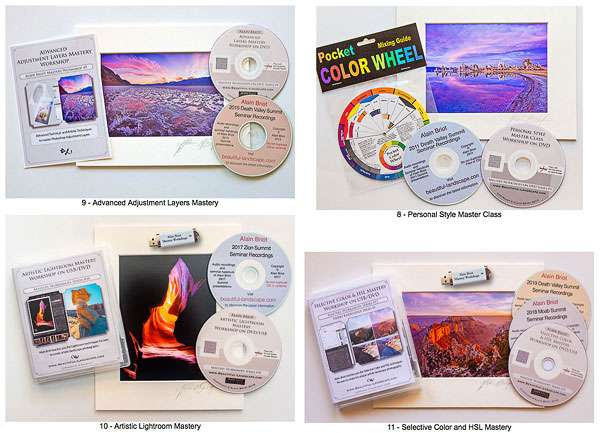
Second, you can also study with my series of eBooks. These also focus on all areas of photography. Discounts are available if you purchase several eBooks at the same time. You can find information HERE

About Alain Briot
You can find more information about my tutorials, photographs, writings and workshops as well as subscribe to my Free Monthly Newsletter on our website. You will receive 40 free eBooks when you subscribe to my newsletter.
Alain Briot
April 2020
Glendale, Arizona
Author of Mastering Landscape Photography,Mastering Composition, Creativity and Personal Style, Marketing Fine Art Photography, and How Photographs are Sold. http://www.beautiful-landscape.com [email protected]






